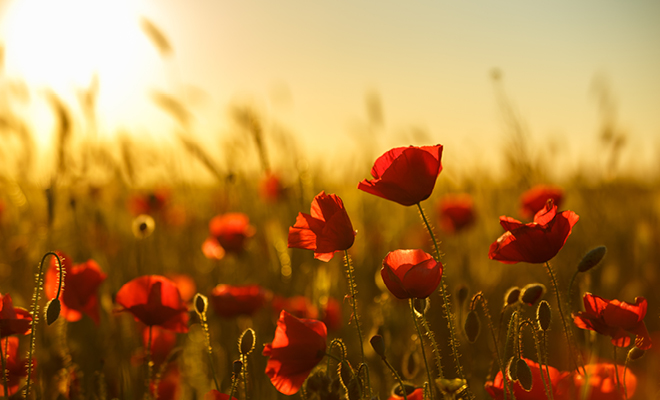Honoring Memorial Day

This year Memorial Day falls on the 28th of May. You’re heading out to your backyard, patio or local park to prepare the BBQ for all the goodies you want to crowd onto the grill, as well as mowing the lawn or putting up that shade canopy – all in preparation for the welcomed 3-day weekend relaxing with family and friends. Here’s a little food for thought.
Did you know Memorial Day was first known as Decoration Day? This day was observed to honor all those who fell in battle during the Civil War. On May 5, 1868, General John A. Logan, leader of an organization for Northern Civil War veterans, called for a nationwide day of remembrance later that month. “The 30th of May, 1868, is designated for the purpose of strewing with flowers, or otherwise decorating the graves of comrades who died in defense of their country during the late rebellion, and whose bodies now lie in almost every city, village and hamlet churchyard in the land,” he proclaimed. The 30th of May was chosen because it was not the anniversary of any particular battle.
After World War I, Decoration Day gradually came to be known as Memorial Day and evolved to commemorate American military personnel who died in all wars. Memorial Day continued to be observed on May 30, the date General Logan had selected for the first Decoration Day—until 1968, when Congress passed the Uniform Monday Holiday Act, establishing Memorial Day as the last Monday in May in order to create a three-day weekend for federal employees; the change went into effect in 1971.
The Red Remembrance Poppy is an artificial flower that has been used since 1921 to commemorate military personnel lost in battle. It represents a common or field poppy (Papaver Rhoeas) inspired by the World War I poem “In Flanders Fields” by Canadian physician Lieutenant Colonel John McCrae. After Moina Michael began the tradition of wearing the red poppy and campaigned for their use as a symbol of remembrance, the poppy was eventually adopted by the American Legion to commemorate American soldiers killed in World War I (1914–1918).
In Flanders Fields
In Flanders fields the poppies blow
Between the crosses, row on row,
That mark our place: and in the sky
The larks, still bravely singing fly
Scarce heard amid the guns below.
We are the dead: Short days ago,
We lived, felt dawn, saw sunset glow,
Loved and were loved: and now we lie
In Flanders fields!
Take up our quarrel with the foe
To you, from failing hands, we throw
The torch: be yours to hold it high
If ye break faith with us who die,
We shall not sleep, though poppies grow
In Flanders fields.
This Memorial Day weekend, once the prep is done and we’re with family and friends, let’s take a moment to remember all military service personnel past and present.
In Memoriam
The number of casualties in each U.S. war:
– Civil War (1861 to 1865): Approximately 620,000 Americans died. The Union lost almost 365,000 troops and the Confederacy about 260,000. More than half of these deaths were caused by a disease.
– World War I (1914 to 1918): 116,516 Americans died, more than half from disease.
– World War II (1939 to 1945): 405,399 American lives lost.
– Korean War (1950 to 1953): 36,574 Americans died.
– Vietnam Conflict (1955 to 1975): 58,220 Americans died. More than 47,000 Americans were killed in action and nearly 11,000 died of other causes.
– Operation Desert Shield/Desert Storm (1990 to 1991): 148 U.S. battle deaths and 145 non-battle deaths.
– Operation Iraqi Freedom (2003 to 2011): 4,422 U.S. service members died.
– Operation New Dawn (2010 to 2011): 66 U.S. service members died.
– Operation Enduring Freedom (2001 to 2014): 2,351 U.S. service members have died.




Leave a Reply